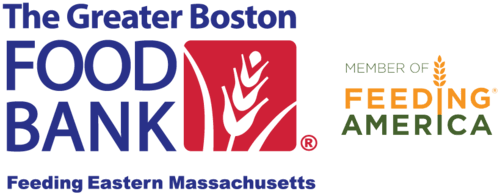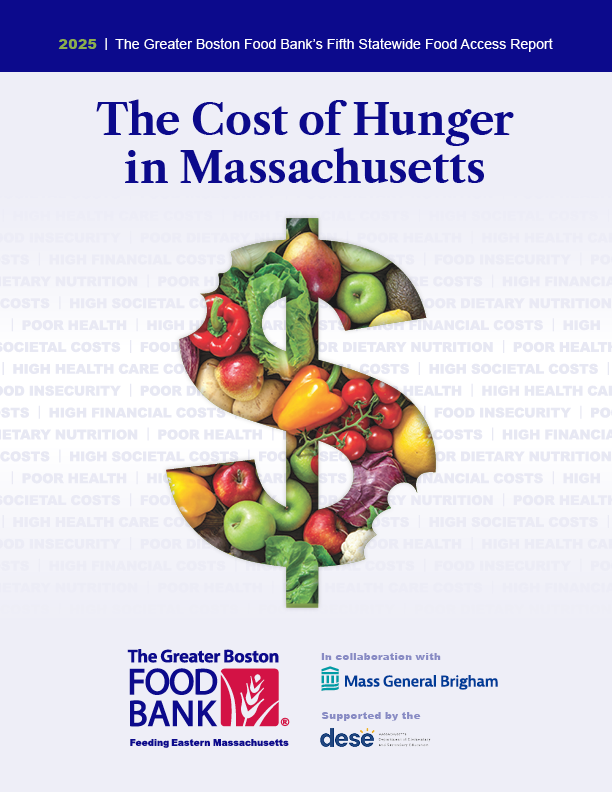Massachusetts Annual Statewide Food Access Report
Since 2020, GBFB has conducted annual surveys to better understand food insecurity and barriers to food assistance in Massachusetts. Originally launched with researchers from the National Food Access and COVID Research Team (NFACT), the study began as a way to track the impact of the pandemic. Today, it continues to guide GBFB and our partners in making data-driven decisions to support our most vulnerable neighbors—and GBFB remains a leader among food banks in this work.
Our 2025 study, The Cost of Hunger in Massachusetts, was conducted in collaboration with Mass General Brigham and supported by the Massachusetts Department of Elementary and Secondary Education (DESE). This year’s research included a specific focus on understanding and quantifying the broader societal impacts of food insecurity—including impacts on diet quality and nutrition, health and well-being, health care utilization and costs, household financial wellness, and social connectedness.
From November 2024 through March 2025, GBFB and MGB conducted an online survey of more than 3,000 adults across Massachusetts. Offered in English, Spanish, and Portuguese, the survey focused on participants’ experiences with food access over the prior twelve months and includes response quotas for income, gender, race, ethnicity, age, education, and region to ensure broad representation across the Massachusetts population. The analysis applied weighting methods to produce estimates reflective of the state’s overall demographics. The survey is annually developed and adapted with input from state government agencies and community and health care partners, including GBFB’s Health and Research Council. Although food insecurity rates in this report are higher than those last reported by the USDA in 2023, the rates reported here are comparable to those found by other online studies with higher sample sizes conducted in 2024 using similar methods.
Check out coverage of the report in The Boston Globe’s article, One in three Massachusetts families don’t have enough to eat, study finds.
For full information on the survey’s methodology, please click here.
Your support will help a bring local families closer to food security.
Previous Food Access Reports
- 2024 Food Equity & Access in Massachusetts: Voices and Solutions from Lived Experience
- 2023 Opportunities to Address Food Equity & Access in Massachusetts: Ending Hunger—Together Report
- 2022 Opportunities for Food Equity & Access in Massachusetts Report
- WATCH: A presentation on our “Gaps in Food Access in Massachusetts During COVID-19” report
- 2021 Gaps in Food Access Report
- 2021 Gaps in Food Access Report Appendix (Frequency Tables)
Do you have additional questions about the study?
Contact our Business and Data Analytics Team at data@gbfb.org.

